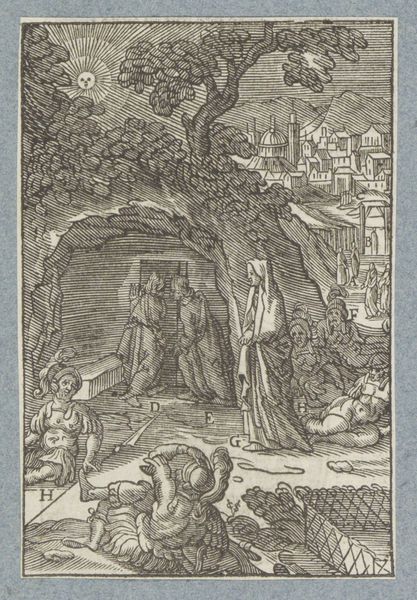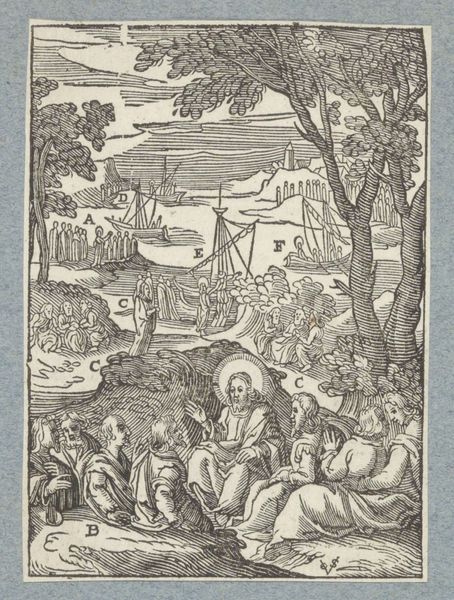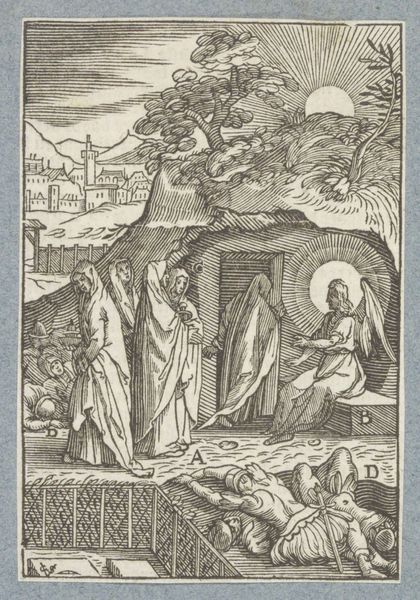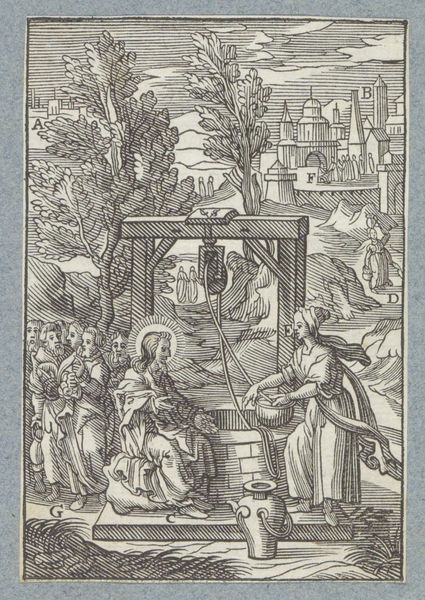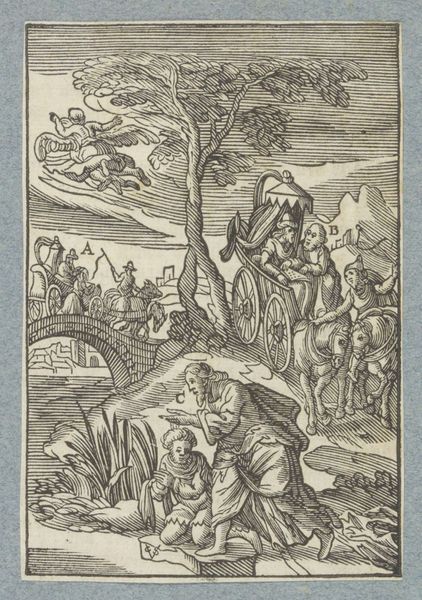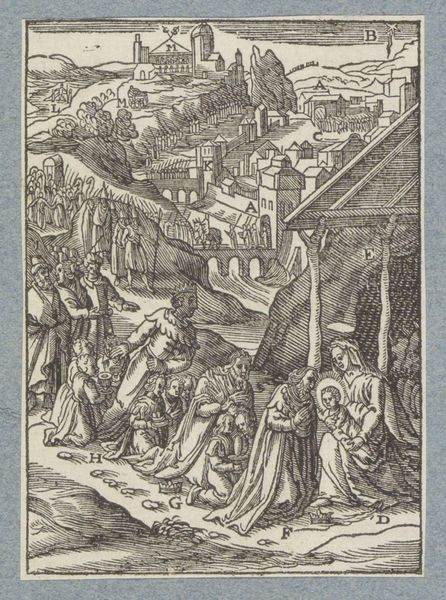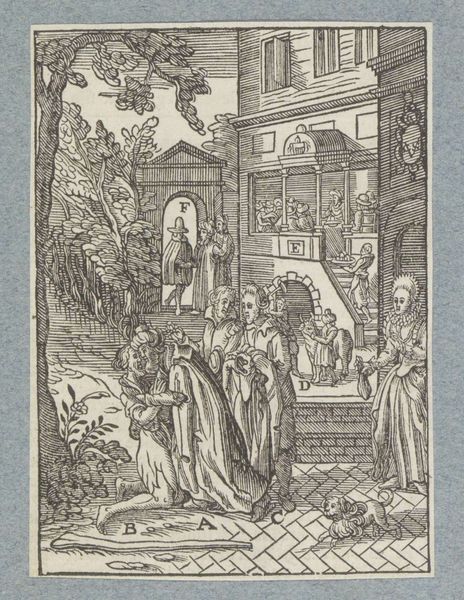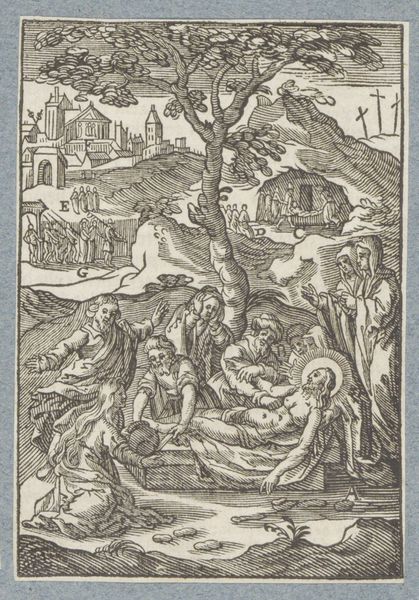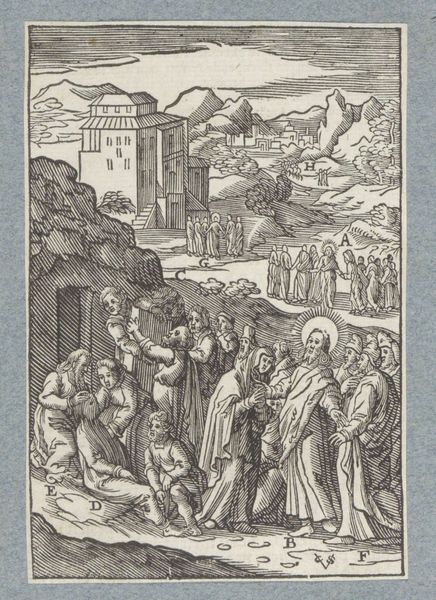
print, engraving
#
narrative-art
#
baroque
# print
#
landscape
#
engraving
Dimensions: height 110 mm, width 73 mm
Copyright: Rijks Museum: Open Domain
This is Christoffel van Sichem the Younger’s woodcut depicting the three Marys leaving the empty tomb. Made in the Netherlands, Sichem’s image embodies the religious climate of the 17th Century. The scene shows the moment when Mary Magdalene, Mary the mother of James, and Salome discover Christ’s tomb is empty. Angels appear to them and the Roman guards are scattered on the ground, dumbstruck. The town in the background is an imagined Jerusalem, but the landscape itself is distinctly northern European, as are the clothes of the figures. Sichem made this print at a time of intense religious conflict, just as the Dutch Republic was consolidating its independence from the Catholic, Spanish Empire. Woodcuts like this one played a part in the newly independent country, reinforcing reformed Christian values for a popular audience. As historians, we can use sources like church records, political pamphlets, and even costume studies to understand the significance of works like this. The meaning of art lies not just in the image itself, but in the culture that produces it.
Comments
No comments
Be the first to comment and join the conversation on the ultimate creative platform.
